A. I. Lvovsky
Russian Quantum Center, University of Oxford
Role of Spatial Coherence in Diffractive Optical Neural Networks
Oct 05, 2023Abstract:Diffractive optical neural networks (DONNs) have emerged as a promising optical hardware platform for ultra-fast and energy-efficient signal processing for machine learning tasks, particularly in computer vision. However, previous experimental demonstrations of DONNs have only been performed using coherent light, which is not present in the natural world. Here, we study the role of spatial optical coherence in DONN operation. We propose a numerical approach to efficiently simulate DONNs under input illumination with arbitrary spatial coherence and discuss the corresponding computational complexity using coherent, partially coherent, and incoherent light. We also investigate the expressive power of DONNs and examine how coherence affects their performance. In particular, we show that under fully incoherent illumination, the DONN performance cannot surpass that of a linear model. As a demonstration, we train and evaluate simulated DONNs on the MNIST dataset of handwritten digits using light with varying spatial coherence.
Training neural networks with end-to-end optical backpropagation
Aug 09, 2023



Abstract:Optics is an exciting route for the next generation of computing hardware for machine learning, promising several orders of magnitude enhancement in both computational speed and energy efficiency. However, to reach the full capacity of an optical neural network it is necessary that the computing not only for the inference, but also for the training be implemented optically. The primary algorithm for training a neural network is backpropagation, in which the calculation is performed in the order opposite to the information flow for inference. While straightforward in a digital computer, optical implementation of backpropagation has so far remained elusive, particularly because of the conflicting requirements for the optical element that implements the nonlinear activation function. In this work, we address this challenge for the first time with a surprisingly simple and generic scheme. Saturable absorbers are employed for the role of the activation units, and the required properties are achieved through a pump-probe process, in which the forward propagating signal acts as the pump and backward as the probe. Our approach is adaptable to various analog platforms, materials, and network structures, and it demonstrates the possibility of constructing neural networks entirely reliant on analog optical processes for both training and inference tasks.
Hybrid training of optical neural networks
Mar 20, 2022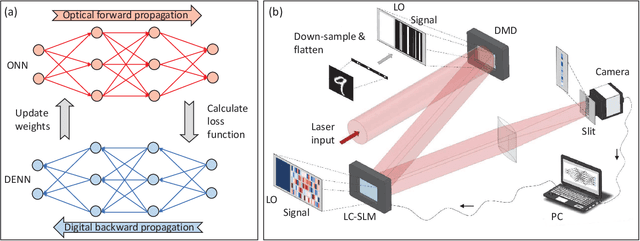
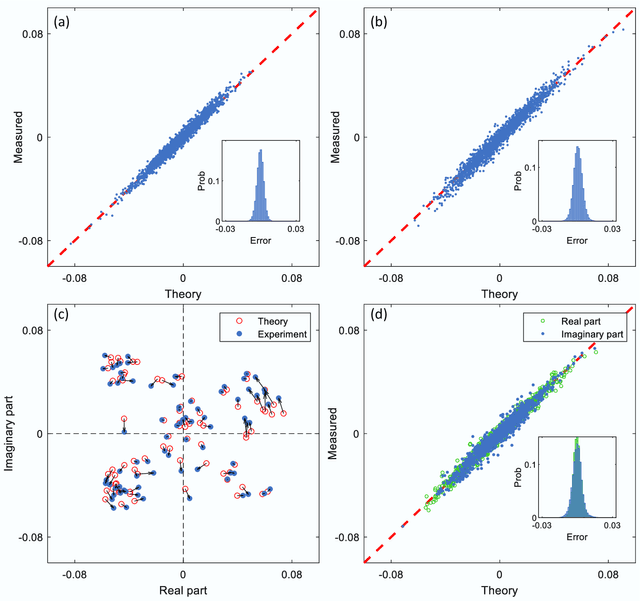
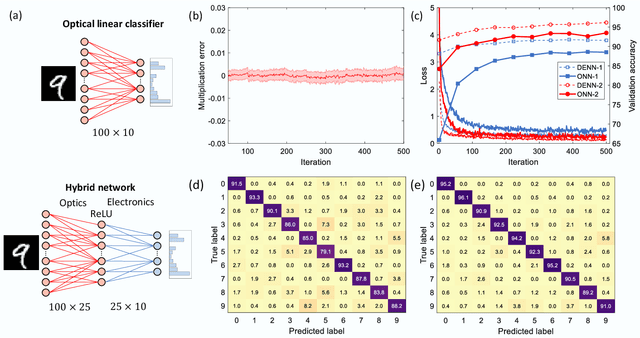
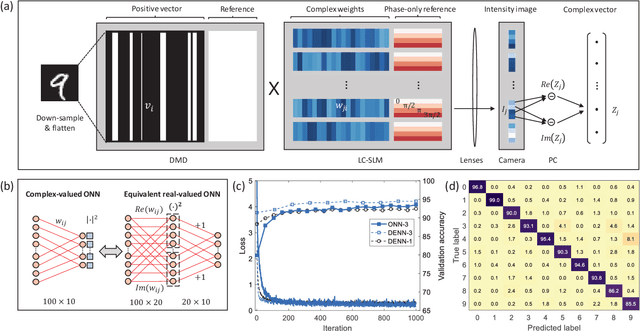
Abstract:Optical neural networks are emerging as a promising type of machine learning hardware capable of energy-efficient, parallel computation. Today's optical neural networks are mainly developed to perform optical inference after in silico training on digital simulators. However, various physical imperfections that cannot be accurately modelled may lead to the notorious reality gap between the digital simulator and the physical system. To address this challenge, we demonstrate hybrid training of optical neural networks where the weight matrix is trained with neuron activation functions computed optically via forward propagation through the network. We examine the efficacy of hybrid training with three different networks: an optical linear classifier, a hybrid opto-electronic network, and a complex-valued optical network. We perform a comparative study to in silico training, and our results show that hybrid training is robust against different kinds of static noise. Our platform-agnostic hybrid training scheme can be applied to a wide variety of optical neural networks, and this work paves the way towards advanced all-optical training in machine intelligence.
Autoregressive neural-network wavefunctions for ab initio quantum chemistry
Sep 26, 2021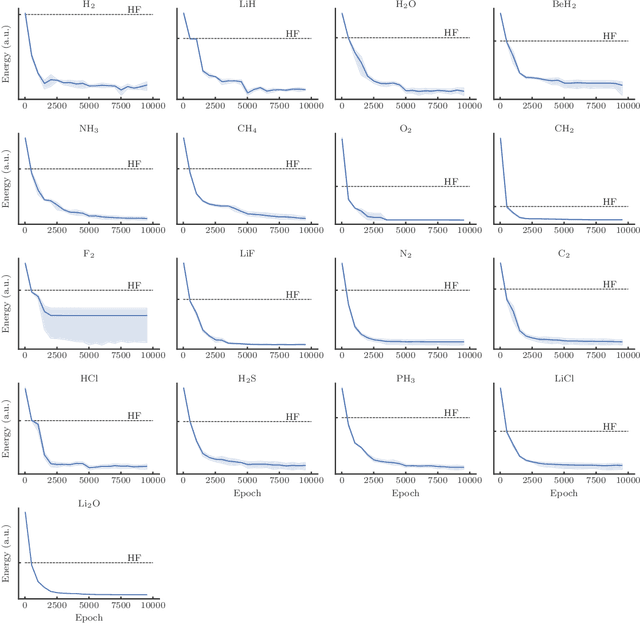
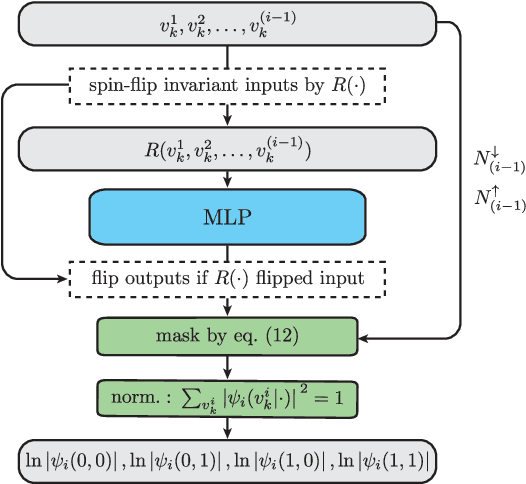
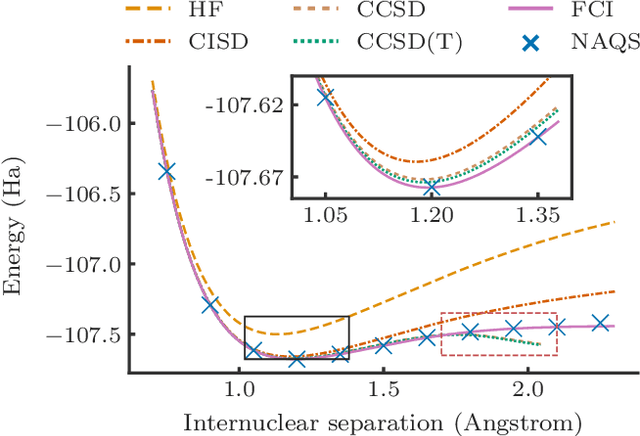
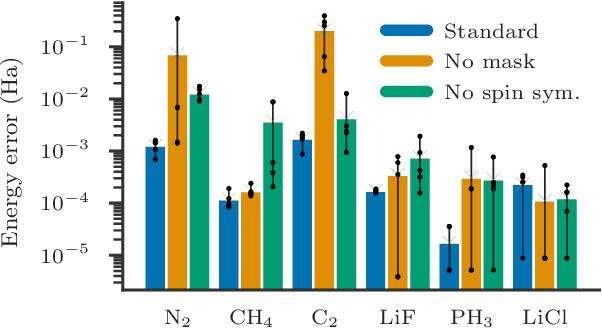
Abstract:Performing electronic structure calculations is a canonical many-body problem that has recently emerged as a challenging new paradigm for neural network quantum states (NNQS). Here, we parameterise the electronic wavefunction with a novel autoregressive neural network (ARN) that permits highly efficient and scalable sampling, whilst also embedding physical priors that reflect the structure of molecular systems without sacrificing expressibility. This allows us to perform electronic structure calculations on molecules with up to 30 spin-orbitals - which consider multiple orders of magnitude more Slater determinants than previous applications of conventional NNQS - and we find that our ansatz can outperform the de-facto gold-standard coupled cluster methods even in the presence of strong quantum correlations. With a highly expressive neural network for which sampling is no longer a computational bottleneck, we conclude that the barriers to further scaling are not associated with the wavefunction ansatz itself, but rather are inherent to any variational Monte Carlo approach.
Aligning an optical interferometer with beam divergence control and continuous action space
Jul 09, 2021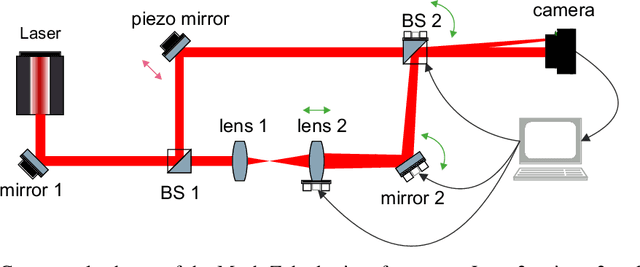
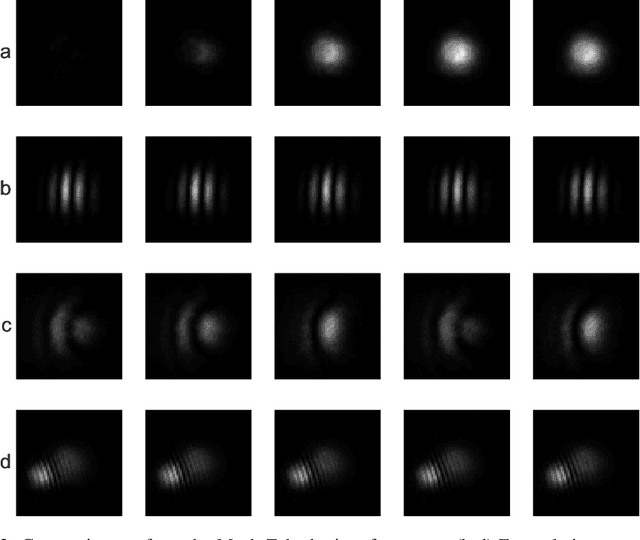


Abstract:Reinforcement learning is finding its way to real-world problem application, transferring from simulated environments to physical setups. In this work, we implement vision-based alignment of an optical Mach-Zehnder interferometer with a confocal telescope in one arm, which controls the diameter and divergence of the corresponding beam. We use a continuous action space; exponential scaling enables us to handle actions within a range of over two orders of magnitude. Our agent trains only in a simulated environment with domain randomizations. In an experimental evaluation, the agent significantly outperforms an existing solution and a human expert.
Adaptation of Quadruped Robot Locomotion with Meta-Learning
Jul 08, 2021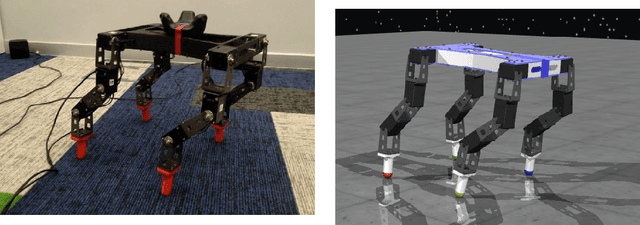


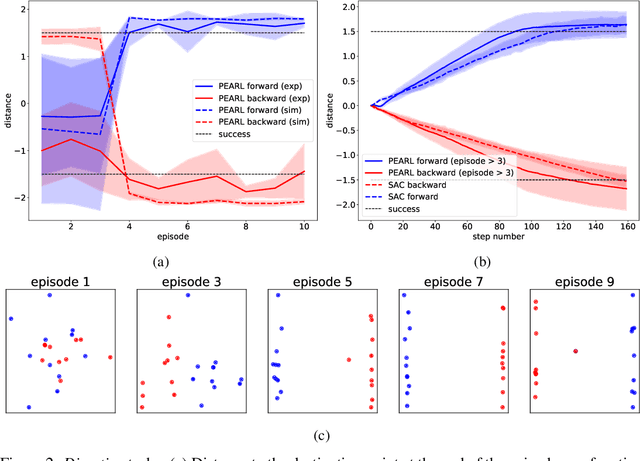
Abstract:Animals have remarkable abilities to adapt locomotion to different terrains and tasks. However, robots trained by means of reinforcement learning are typically able to solve only a single task and a transferred policy is usually inferior to that trained from scratch. In this work, we demonstrate that meta-reinforcement learning can be used to successfully train a robot capable to solve a wide range of locomotion tasks. The performance of the meta-trained robot is similar to that of a robot that is trained on a single task.
Reinforcement Learning Enhanced Quantum-inspired Algorithm for Combinatorial Optimization
Feb 14, 2020
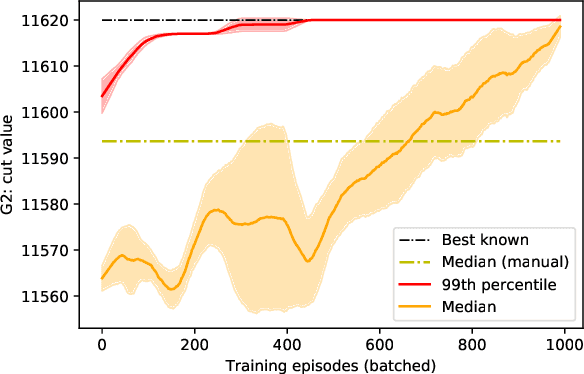

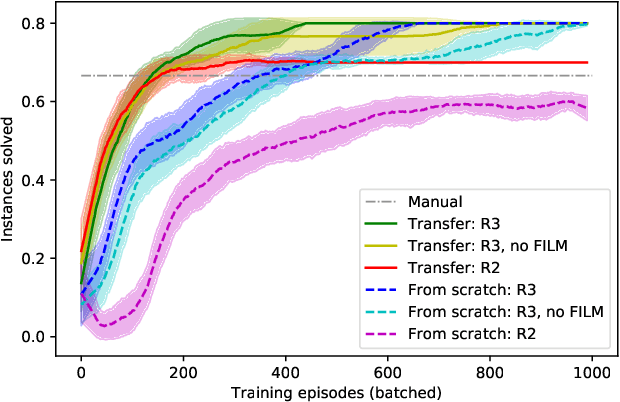
Abstract:Quantum hardware and quantum-inspired algorithms are becoming increasingly popular for combinatorial optimization. However, these algorithms may require careful hyperparameter tuning for each problem instance. We use a reinforcement learning agent in conjunction with a quantum-inspired algorithm to solve the Ising energy minimization problem, which is equivalent to the Maximum Cut problem. The agent controls the algorithm by tuning one of its parameters with the goal of improving recently seen solutions. We propose a new Rescaled Ranked Reward (R3) method that enables stable single-player version of self-play training that helps the agent to escape local optima. The training on any problem instance can be accelerated by applying transfer learning from an agent trained on randomly generated problems. Our approach allows sampling high-quality solutions to the Ising problem with high probability and outperforms both baseline heuristics and a black-box hyperparameter optimization approach.
Quantum-inspired annealers as Boltzmann generators for machine learning and statistical physics
Dec 18, 2019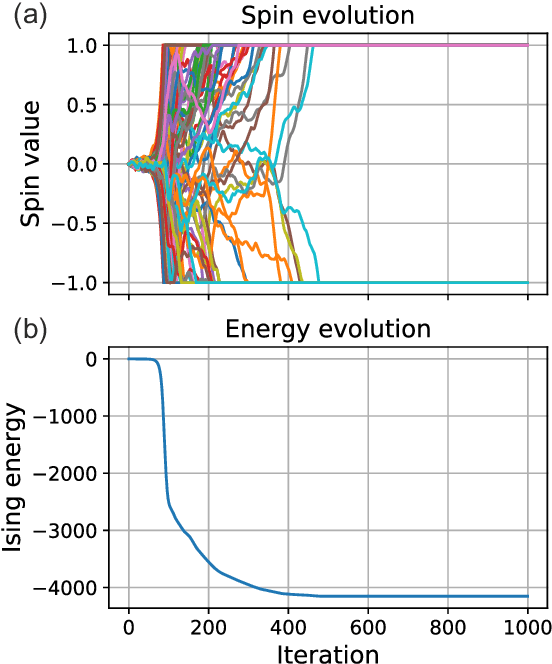
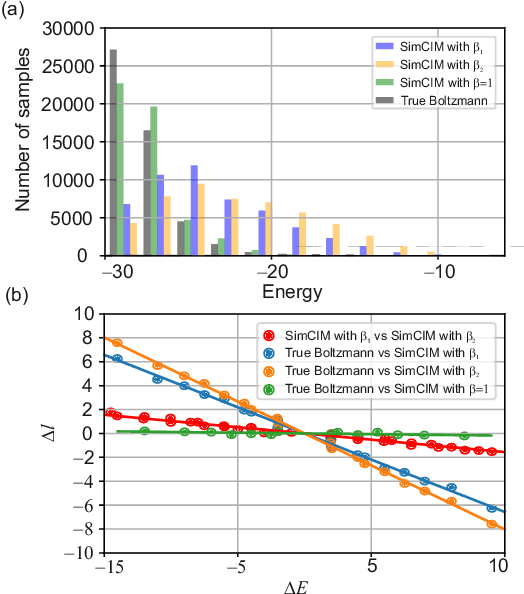

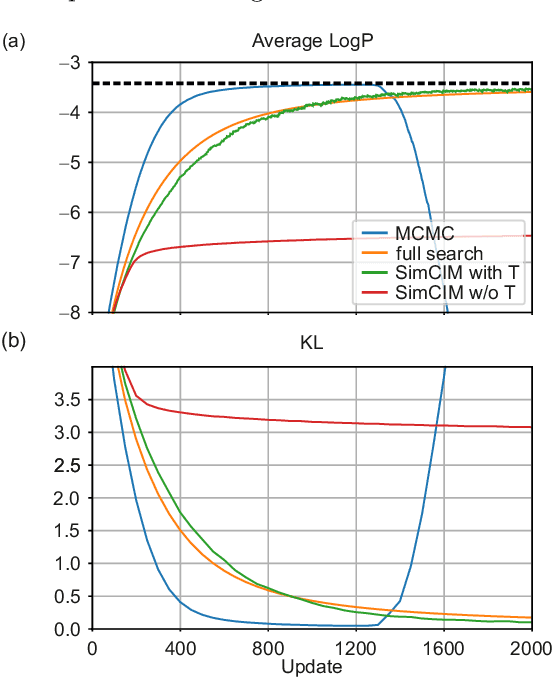
Abstract:Quantum simulators and processors are rapidly improving nowadays, but they are still not able to solve complex and multidimensional tasks of practical value. However, certain numerical algorithms inspired by the physics of real quantum devices prove to be efficient in application to specific problems, related, for example, to combinatorial optimization. Here we implement a numerical annealer based on simulating the coherent Ising machine as a tool to sample from a high-dimensional Boltzmann probability distribution with the energy functional defined by the classical Ising Hamiltonian. Samples provided by such a generator are then utilized for the partition function estimation of this distribution and for the training of a general Boltzmann machine. Our study opens up a door to practical application of numerical quantum-inspired annealers.
Exploratory Combinatorial Optimization with Reinforcement Learning
Sep 09, 2019

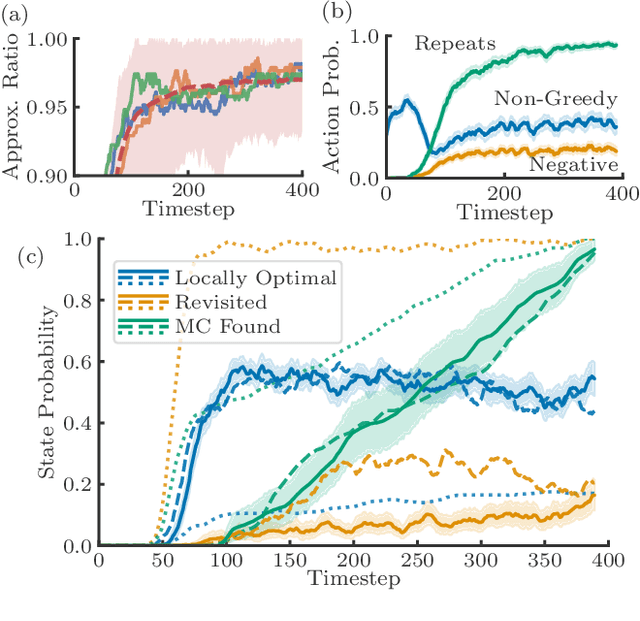

Abstract:Many real-world problems can be reduced to combinatorial optimization on a graph, where the subset or ordering of vertices that maximize some objective function must be found. With such tasks often NP-hard and analytically intractable, reinforcement learning (RL) has shown promise as a framework with which efficient heuristic methods to tackle these problems can be learned. Previous works construct the solution subset incrementally, adding one element at a time, however, the irreversible nature of this approach prevents the agent from revising its earlier decisions, which may be necessary given the complexity of the optimization task. We instead propose that the agent should seek to continuously improve the solution by learning to explore at test time. Our approach of exploratory combinatorial optimization (ECO-DQN) is, in principle, applicable to any combinatorial problem that can be defined on a graph. Experimentally, we show our method to produce state-of-the-art RL performance on the Maximum Cut problem. Moreover, because ECO-DQN can start from any arbitrary configuration, it can be combined with other search methods to further improve performance, which we demonstrate using a simple random search.
Experimental quantum homodyne tomography via machine learning
Aug 01, 2019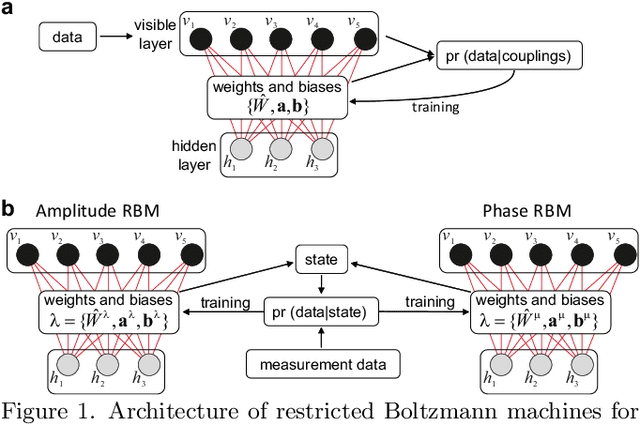
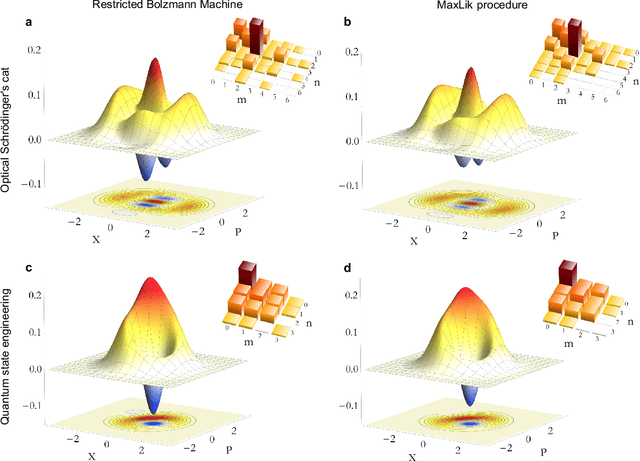
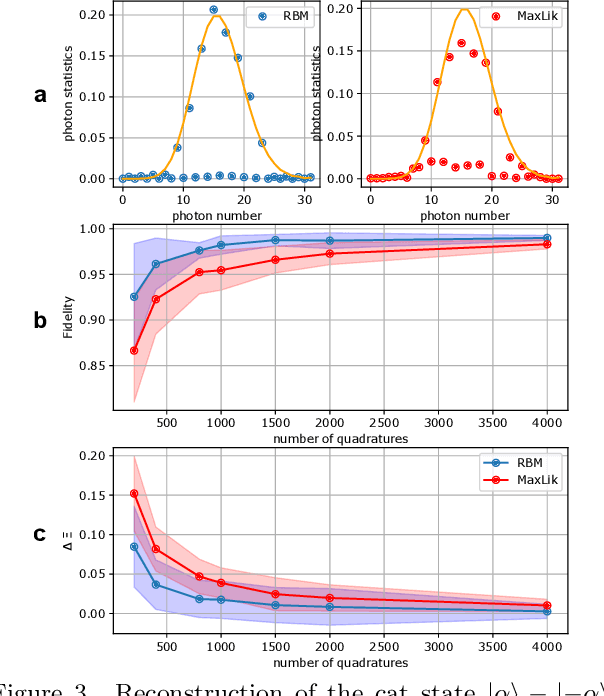
Abstract:Complete characterization of states and processes that occur within quantum devices is crucial for understanding and testing their potential to outperform classical technologies for communications and computing. However, solving this task with current state-of-the-art techniques becomes unwieldy for large and complex quantum systems. Here we realize and experimentally demonstrate a method for complete characterization of a quantum harmonic oscillator based on an artificial neural network known as the restricted Boltzmann machine. We apply the method to optical homodyne tomography and show it to allow full estimation of quantum states based on a smaller amount of experimental data compared to state-of-the-art methods. We link this advantage to reduced overfitting. Although our experiment is in the optical domain, our method provides a way of exploring quantum resources in a broad class of large-scale physical systems, such as superconducting circuits, atomic and molecular ensembles, and optomechanical systems.
 Add to Chrome
Add to Chrome Add to Firefox
Add to Firefox Add to Edge
Add to Edge